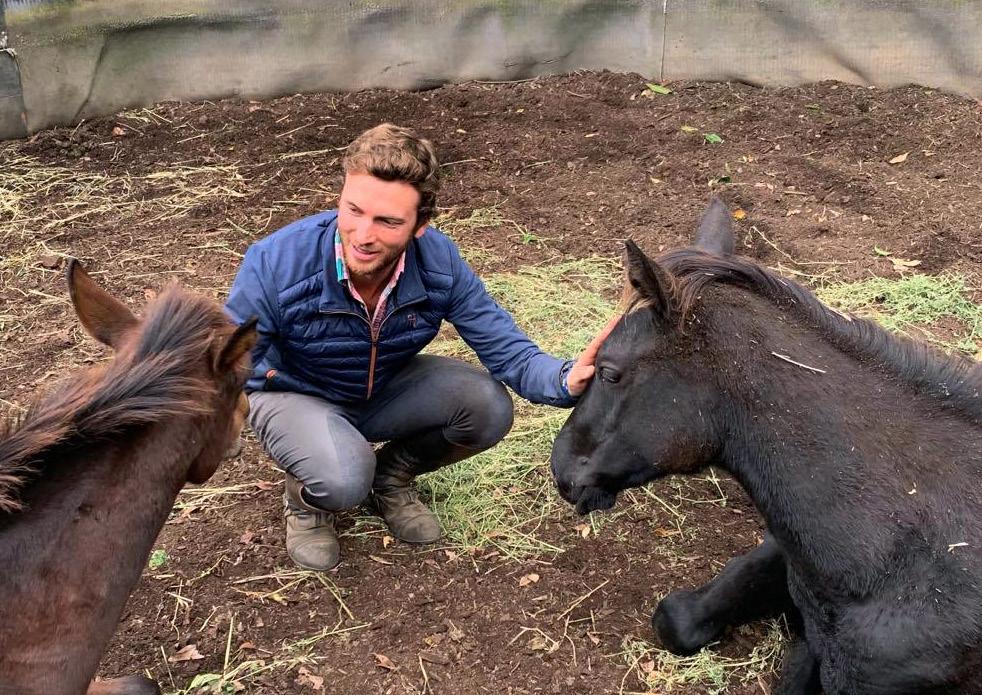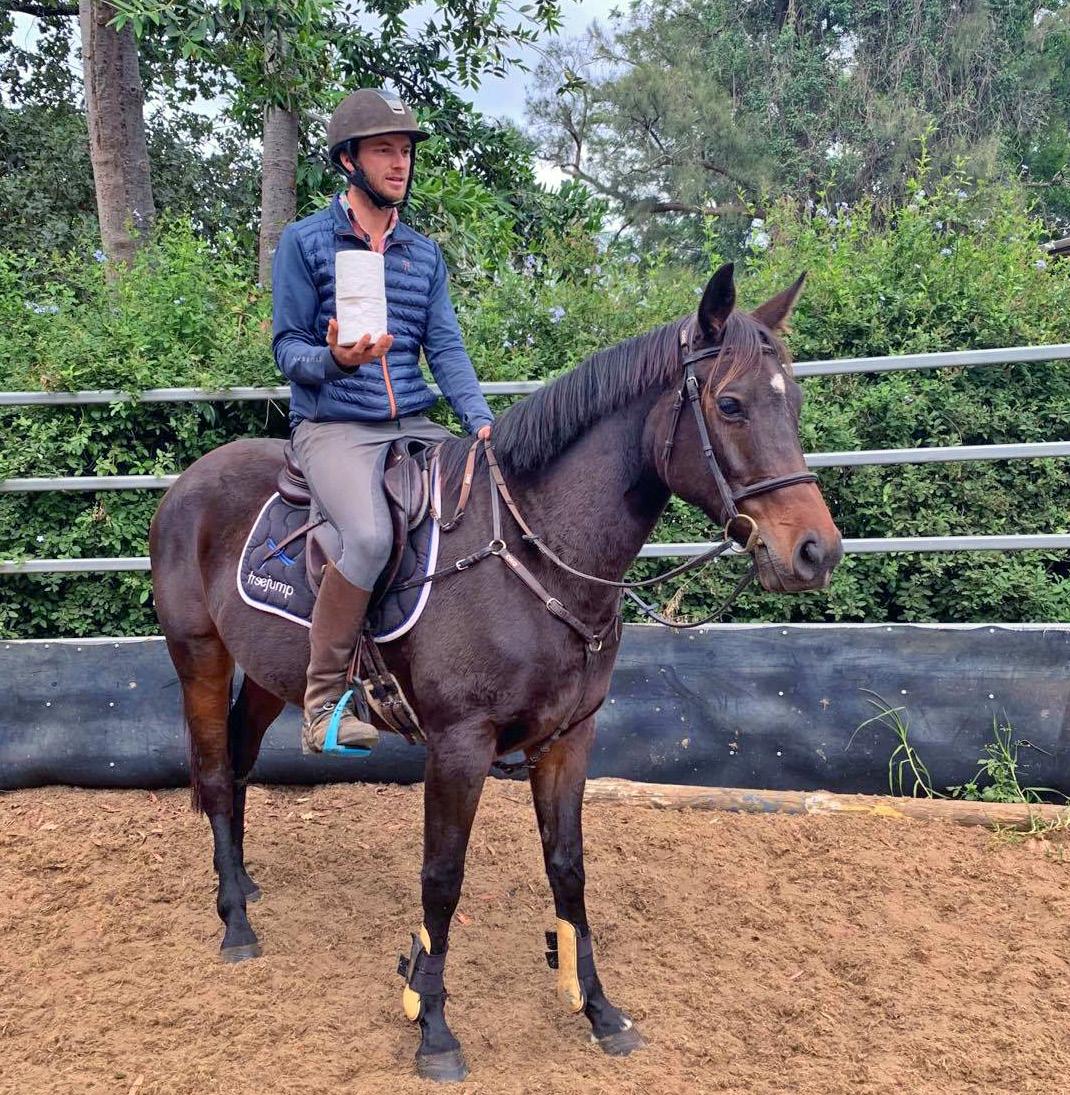
6 minute read
Brister’s Brief
BRISTER’S BRIEF
Hitting your stride during lockdown
No matter if you’re social distancing, selfisolating or are even in quarantine, if you are at home with your horse this is the perfect time to add some spice and variety to your training, writes CHARLIE BRISTER.
Who could possibly have guessed only some weeks ago that instead of the show season and our pre-Olympic events being in full swing, we would all be involved in the fight against COVID-19 (Coronavirus).
Let’s hope that before too long social distancing will be over and horse events will be back on track, or at least will soon be scheduled.
With no competitions it can be hard to focus on training. A good plan is needed to keep you and your unicorn on the right path. Taking a step back and looking at the bigger picture with your horse could even help you make a couple of improvements so that you are in better condition for the spring events.
Here a few areas that you can work on - mostly at home. My main tip is to keep it simple during these times of uncertainty.
Videos and online learning
There are plenty of good DVDs worth watching, not the least of which are any you can find by Ingrid Klimke. After the recent Ingrid Klimke masterclass in Melbourne, all of my horses have had regular cavaletti training fitted into their routine. Klimke was captivating to watch, showing Energizer Bunny-like energy right up to the end of the masterclass, as she coached riders starting in the warmup phase of dressage right up to Grand Prix level competitors. Multi-tasking was obviously a strong suit, as she managed to answer audience questions from yours truly and others, interspersed with countless book signings.
The warm-up is probably the most crucial phase of Ingrid Klimke’s system. Her riders walk the horses for at least ten minutes on a loose rein before starting the trot. When they do start trotting it’s on a long, but not loose rein. Here she keeps things very simple (simple, not easy), riding forward and straight from the inside leg to the outside rein to encourage the horse to stretch forward and down.
More advanced work is not started until the horse is listening both mentally and physically. Keeping the horse’s brain onside was an important focus for Ingrid and that’s why there is so much variety in her routine.
Once the horse is warmed up the work can begin. This might be dressage or jumping but the warm-up remains the same for both disciplines. Klimke is one of very few riders who have competed at the top level in both dressage and eventing, which just goes to show how versatile her training is. Whether your passion is jumping, eventing or dressage, you’ll be doing yourself and your horses a favour if you look up her videos rather than binging on Netflix!
Just to stress again, one of the big takeaways from the masterclass was to ensure there’s plenty of variety in your training - especially when there are no competitions coming up. Even for her dressage horses, Ingrid does regular cavaletti/pole work, jumping and trail riding.
The plus side of this enforced break is that it allows us to go back and focus on the basics.
• How good are your horse’s basic responses, the stop, go and turn buttons? • Can you shorten or lengthen the stride, can you make the tempo faster or slower? • Can you achieve this while keeping the horse relaxed? Sometimes we need to push our horses to the edge of their comfort zone but hopefully not out of it.
work. Keep riding the walk though. It’s easy to let the horse wander off during a short break.
For the jumpers, you might want to focus on adjusting strides between fences rather than jumping higher. For example, place two poles five or six strides apart. Then see how many strides you can do: four, five, six, seven or eight. Until your horse is strong enough and understands the exercise, try and maintain rhythm and balance rather than forcing a certain number of strides.
Learning old style – a book!
With a bit more spare time on your hands, why not pick up a book on horse training? My favourite this week is Horses Are Made to Be Horses by Franz Mairinger, the former Spanish Riding School instructor who coached the Australian eventing team during their formative years in the 50s and 60s.
Mairinger was classically trained in Germany and Austria and introduced a well-established methodology and system to the Australian riding scene. Back in the early 1950s, Australia was a little more Wild West than Warendorf. Under the new system, horses were encouraged to maintain their natural enthusiasm while improving their balance and suppleness through progressive exercises.
The benefits of Mairinger's well-rounded approach could be seen in both the dressage and jumping accomplishments of the riders he trained (Gold for eventing in Rome in 1960 for example). At the time, most Australians didn't know anything about dressage, let alone its benefits for jumping and the longevity of a horse.

Getting fit and supple
Maybe you've been stuck at home for a little while and you can’t sit still anymore. Gyms are havens for bacteria so how about a home work out?
Lockdown multitasking: Charlie fine tunes his balance on the bosu ball while reading Horses are Made to be Horses and drinking coffee.
Bonding time with foals Rex and Rosa.

main weaknesses from a fitness
standpoint. Is sitting trot really difficult? Do you cramp when doing too much dressage (guilty)? Or, are you completely puffed at the end of a cross-country course?
Each of these issues needs a slightly different approach. There are plenty of videos available on YouTube, or you can research and find a coach online for
anything you think would be of benefit.
If you feel you need more core stability, using a bosu or yoga ball might help you with the sitting trot.
Speaking as someone who used to struggle a lot with cramps during dressage, it’s definitely worth giving yoga a go. Improved flexibility, relaxation and regular breathing will help massively with your connection to the horse. Not only that, but the breathing exercises can help to calm pre-test jitters.
If you finish cross country courses red faced and out of breath, a more serious cardio workout might be required. Don’t expect your horse to be in complete control of his legs and balance at the end of the course if you can’t be in control of yours.

Set yourself a schedule and a plan
Coronavirus might look like this:
Monday: Dressage Tuesday: Pole work/cavaletti Wednesday: Hack out/trail ride Thursday: Dressage/flat work Friday: Jumping course work and stride adjustment Saturday: Hack out/trail ride Sunday: Day off
Of course, you might choose to do a lunging session in place of one of these days or swap the order around a little.
The main idea is to not work too hard on consecutive days. This goes for all horses young and old (and for people too!). The muscles need time to recover, and their brain doesn’t want to do the same thing every day - other than eating grass and hanging out with the herd!
Practising for the COVID-19 toilet paper challenge.
Rainy Corona days
What’s one job that’s always near the bottom of the list? Cleaning up the tack room! Use the break in competitions to sort through all your gear. Repair what you can, throw out what you can’t, and put any unused saddles up for sale so you can buy newer ones (cough … The Saddle Hub … cough).
Once everything is neat and tidy, prepare to hang out with your horse. You need to invest lots of time to build your connection and bond with your fourlegged partner, and this is the perfect time to do it!










